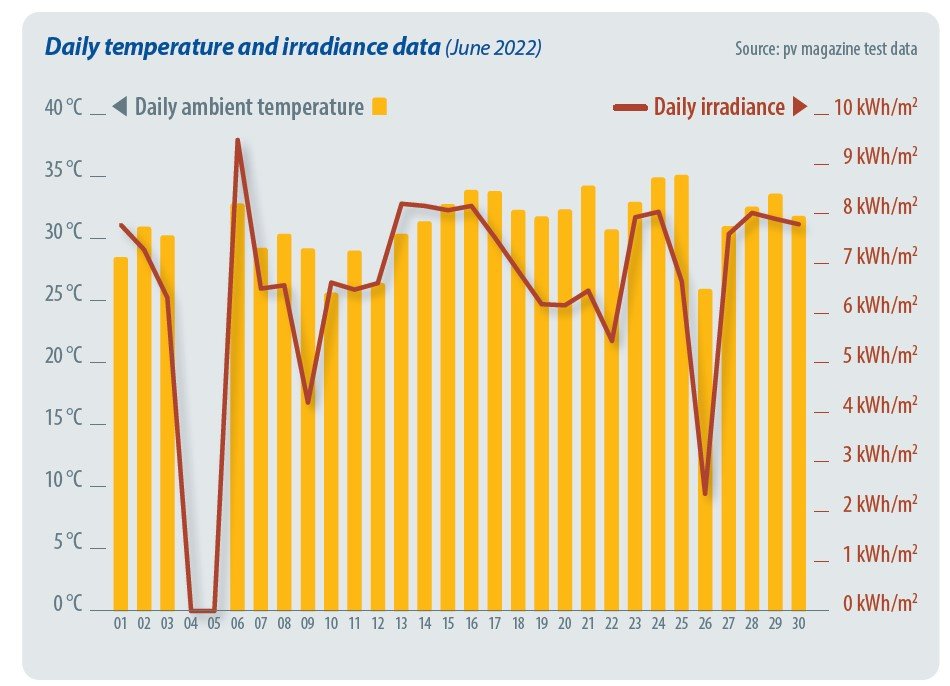pv magazine test: June 2022 Results
By George Touloupas
This article was originally published in pv magazine – August 2022 edition. Learn more about the pv magazine test here.
CEA’s Senior Director of Technology & Quality, George Touloupas, provides analysis of the June 2022 energy yield results from the outdoor test field in Xi’an, China.
The first chart (Figure 1) below shows meteo station data (irradiance and ambient temperature) for June 2022. The facility experienced a power cut from June 4 to 5.
Figure 1: Daily temperature and irradiance data - June 2022
The average bifacial boost is 11.1% for June 2022. Bifacial boost is defined as the relative advantage of the average specific energy yield of all bifacial products compared to the average specific energy yield of all mono-facial mono PERC products.
Table 1: Bifacial boost - March to June 2022
The chart below (Figure 2) shows the relative specific energy yield comparison between PV module technologies. Although the top performer is Longi’s bifacial PERC module, the average specific energy yield of the bifacial TOPCon category leads over the average of modules in the bifacial PERC category.
Our test field only has one sample from Jolywood in the n-TOPCon bifacial category. As TOPCon modules become more prominent, we look forward to installing more samples to achieve a more representative yield comparison. We decided to exclude mono and multi Al BSF (non PERC) samples from our analysis charts, as these technologies have been effectively retired. We currently have one multi sample installed from Znshine and one mono sample from Recom.
Figure 3: Total energy yield - June 2022
Table 2: Energy yield ranking - historical - March to June 2022
Notes on the energy yield measurements:
The energy yield comparison among various technologies, including bifacial boost, will be analyzed using products installed after the beginning of 2019.
The energy yield is given in Wh/Wp and calculated by dividing the energy produced by the module by the Pmax at STC of the module. This Pmax is the maximum STC power after stabilization.
The results are grouped in categories, per module type.
Bifacial boost depends on: bifaciality factor, installation geometry, albedo, sun angle, and diffuse irradiance. The ground is grey gravel.
Test Cooperation
pv magazine test is a cooperative effort involving pv magazine, APsystems, CEA, and Gsolar. All testing procedures are carried out at Gsolar’s test laboratory in Xi’an, China. CEA supervises these tests and designed both the indoor and outdoor testing procedures.















